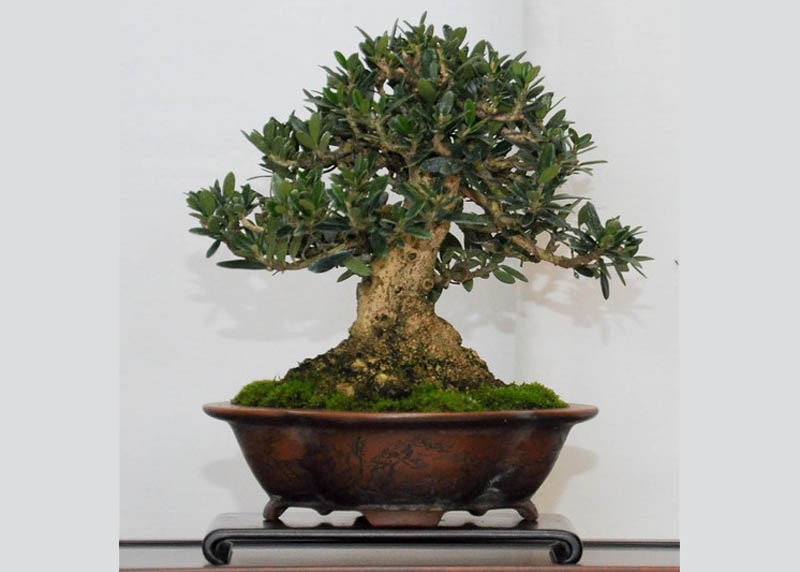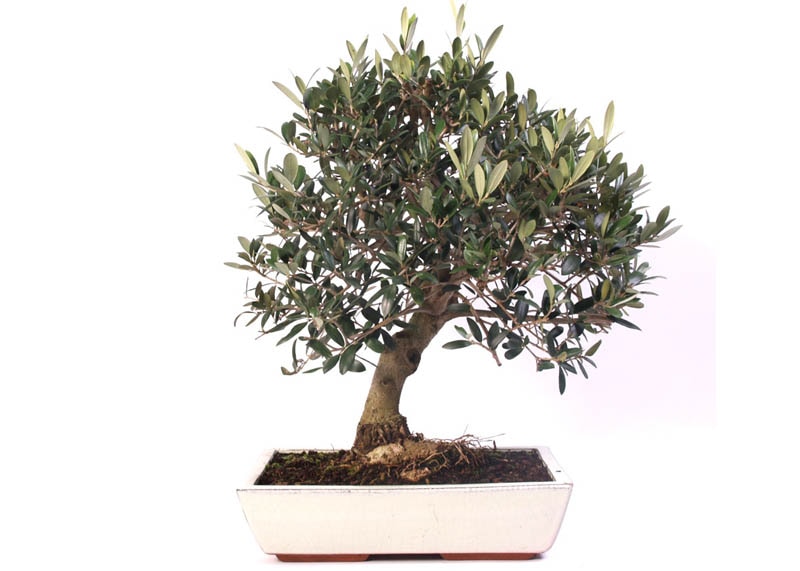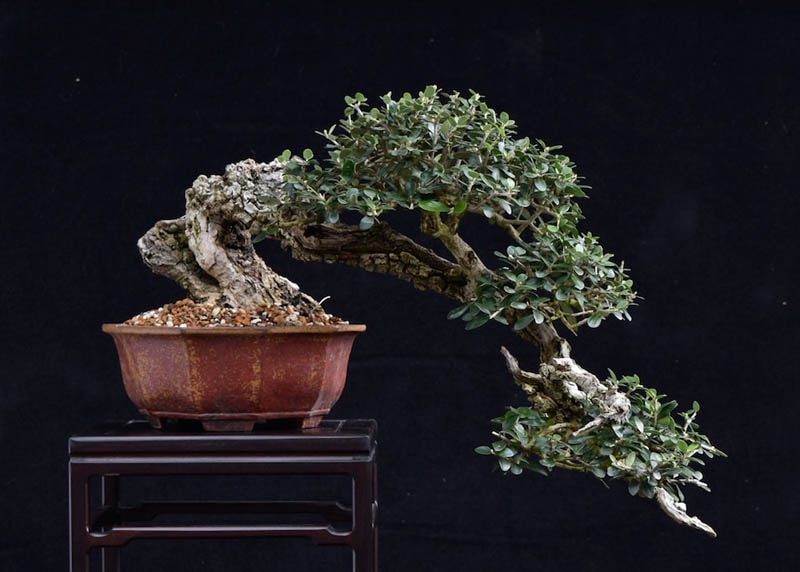Olive Bonsai Care guidelines
The olive bonsai needs a place with full sun which also helps to reduce the size of the leaves. It can withstand temperatures slightly below 0° C / 32° F but must be protected from stronger frost. It is best to place the olive tree in a cold greenhouse which is kept frost-free. If kept in a warm room in the house in winter the olive will suffer from lack of light and dry air what makes it very susceptible to scale.
Water the olive bonsai thoroughly whenever the soil gets dry but avoid constant wetness. Normal tap water of good quality is just fine for the olive tree. Continue reading about watering Bonsai trees.
Watering
Free lecture from the Beginners CourseApply solid organic fertilizer every four weeks or use a liquid fertilizer every week during the growing season.
Strong pruning, if necessary, should be done in late winter. The olive will respond with vigorous growth in the following spring. It can also bud from old wood. When the new shoots grow too long, cut back to one or two pairs of leaves. Very healthy specimens can also be defoliated in order to promote a fine ramification. Younger branches and new shoots can be wired at any time. Old branches are stiff and brittle and hard to bend. Guy-wires can be a good alternative. Continue reading about pruning Bonsai trees.
Repot in spring before the buds begin to swell, every two or three years and remove about a third of the roots. Old trees can be repotted at longer intervals. Use a well draining soil mix with a slightly alkaline pH value (7 - 8). Continue reading about repotting Bonsai trees.
The olive can be propagated from seeds and cuttings.
Vigorous olive trees are hardly attacked by pests and diseases. If the olive is kept too warm in winter, scale or mealy bugs can bother it. Then try to provide better conditions and use a specific pesticide. For more detailed information on these techniques, check out our Bonsai tree care section.

Olive bonsai tree

Leaves of the Olive

Olea europaea bonsai

Olive bonsai in cascade style
General information about the Olive Bonsai tree
Olive trees are well ramified evergreen trees or shrubs and, depending on the variety, can become up to 10 or even 20 meters (33 to 66 ft) tall. Wild olive trees, called oleaster, are smaller than cultivars. The leaves are silvery-grey and narrow lanceolate to elliptic. The olive tree grows very slowly but can become several hundred or even a thousand years old. Old trees develop a rough bark and gnarled trunks. The small yellowish white flowers are followed by green drupes which turn black when they get ripe and contain a single hard seed each. Olive fruits are edible after they are watered and kept in brine for some time, but most of them are used for producing olive oil.
For bonsai you can use cultivated varieties but the wild olive Bonsai (Olea europaea sylvestris) has the advantage of very tiny leaves and short internodes. In many cases yamadori oleasters possess beautiful natural deadwood and a lovely rough bark that indicates a high age and survival in hostile conditions. The olive is easy to care for if you can place it in a cold but frost-free greenhouse in winter. If you need help identifying your tree, take a look at our Bonsai tree identification guide.





